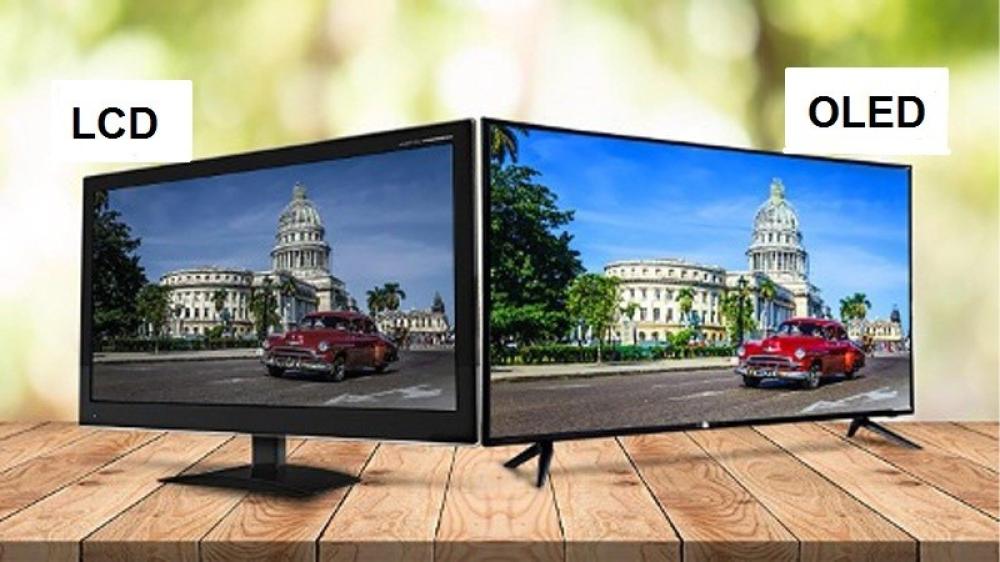When considering purchasing a new screen, whether for a smartphone or a TV, it is important to know the differences between the available technologies, especially LCD and OLED screens , as each competes to provide high-quality images with different characteristics. Here I will help you learn about each technology, its advantages and disadvantages, so that you have the knowledge necessary to make the right decision.
What is LCD screen?
LCDs , or liquid crystal displays , are based on liquid crystal technology that is illuminated by a backlight (usually an LED ). These displays require a backlight to illuminate them, which means they are always lit, even when displaying black. LCD technology relies on passing light through a series of layers until it reaches the surface of the display to display the image with clear color and detail. This technology provides bright, high-quality images, and is often found in large displays such as televisions and desktop computers.
What is OLED display?
OLED displays, or organic light-emitting diodes , are based on a different technology, where each pixel is made of an organic material that can emit light on its own when an electric current is passed through. OLEDs don’t need a backlight; each pixel can be completely turned off to show true black, giving the display an extremely high contrast. Thanks to this technology, OLED displays offer rich colors and excellent contrast, as well as greater manufacturing flexibility, making them a favorite among many companies for providing high-quality displays in smartphones and televisions.
Advantages and disadvantages of LCD screens
Advantages of LCD monitors
- High brightness : Thanks to the presence of backlighting, LCD screens can reach high brightness levels, making them good for use in brightly lit areas or outdoors.
- Relatively long life : In terms of lifespan, LCD screens have good durability and last for a long time without a noticeable decrease in display quality.
- Color stability over the years : Thanks to their design, LCD screens maintain a constant level of color even after a long period of use.
- Lower cost : In most cases, LCD screens are less expensive than OLED screens, making them a preferred choice for many people looking for good quality at a reasonable cost.
Disadvantages of LCD screens
- Lower contrast : Due to the presence of backlighting, it is difficult to display true black, as black is grayish, which reduces contrast and affects the display accuracy.
- Limited viewing angle : LCD screens may suffer from color shifting or loss of quality when viewed from side angles, making the viewing experience less good from different angles.
- Slow response : Compared to OLED, LCD screens can be a bit slow to respond, especially in fast-paced displays like gaming, which can result in ghosting or image distortion.
Advantages and disadvantages of OLED screens
Advantages of OLED displays
- High Contrast : OLED technology allows each pixel to be completely turned off, which means you get true blacks and extremely high contrast. This makes images look sharper and more vibrant.
- Wide viewing angle : OLED displays have a wide viewing angle, so you can enjoy colors and details from any angle without losing quality or changing colors.
- High response speed : OLED screens are fast response screens, as each pixel changes individually, which reduces distortions and makes them a good choice for gaming and high-resolution video enthusiasts.
- Lightweight and Flexible : Because OLED displays do not require backlight layers, they are lighter and allow companies to manufacture flexible, shapeable displays.
Disadvantages of OLED screens
- Shorter lifespan : Despite the picture quality, OLED displays can experience pixel wear over time, especially when displaying static content for an extended period of time, which can lead to what is known as “screen burn-in.”
- Less brightness in the sun : In bright or outdoor areas, it may be difficult to see content clearly on an OLED screen, because its ability to reach high brightness levels is less than LCD.
- High cost : Due to their advanced technology, OLED displays are usually more expensive than LCD displays, making them an expensive choice, especially in large displays.
Difference between LCD and OLED screens?
Taking a deeper look at the differences between LCD and OLED displays, we can identify some fundamental differences that affect their performance and quality in different applications. If you are wondering why some people prefer OLED over LCD or vice versa, here are the details that will enable you to understand the difference more clearly.
- Contrast and Color : As mentioned earlier, OLED excels at displaying deep blacks thanks to its ability to turn off each pixel independently. This allows for unlimited contrast and more accurate and vibrant colors compared to LCD, which relies on a fixed backlight that makes colors and shades less distinct.
- Viewing Angle : OLED displays offer a wider viewing angle, which means you’ll enjoy excellent picture quality from almost any angle. In contrast, LCD displays can suffer from color and brightness degradation when viewed from sharp angles.
Which screen to choose? Important tips
Now that you have an idea of the differences between LCD and OLED , you may be hesitant about which technology is right for you. Here are some points to help you make a decision based on your personal needs.
How to choose between LCD and OLED?
- Personal Use : If you prefer watching movies and TV shows with sharp details and vivid colors, OLED displays are the perfect choice for you. But if you are looking for a budget display for casual use such as browsing the internet or using applications, LCD may be the better choice.
- Space and ambient light : If you'll be using the screen in a brightly lit room or outdoors, LCD screens offer higher brightness than OLED , making them more suitable for those conditions.
- Budget : If you’re looking to buy a high-quality display at a lower cost, LCD displays are the way to go, offering a good mix of performance and price. But if your budget allows it and you want the best viewing experience, OLED displays offer unparalleled performance.
Life expectancy of LCD and OLED displays
When it comes to lifespan, LCD displays typically last longer than OLED displays. OLED displays can suffer from pixel burn- in if static images are displayed for too long, resulting in permanent marks on the screen. LCD displays, on the other hand, do not suffer from this problem and continue to perform well over the years without significantly affecting the image.
However, OLED displays generally last well, depending on how they are used. With moderate use, OLED can last for several years without noticeable problems.
Price and quality between LCD and OLED
LCD displays tend to be more economical than OLED , making them the ideal choice for people who care about getting a good display at an affordable price. On the other hand, OLED displays come at a higher cost due to the superior performance they offer, especially in terms of high picture quality and great contrast.
Ultimately, if quality and vivid picture quality are your priority, OLED is worth the investment. But if you’re looking for a more affordable option without sacrificing too much quality, LCD is a good choice.

